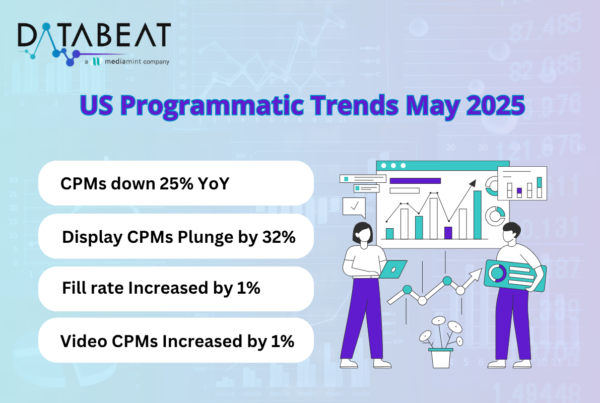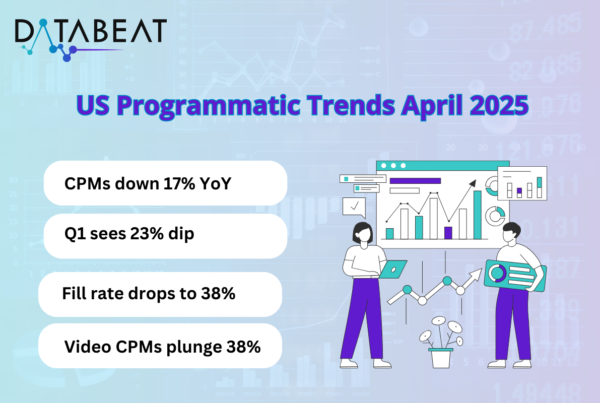
Date & Time – 21st March 2024, @1PM EST (Thursday)
Webinar Overview:
In this webinar we are going to talk about the best practices and how they impact the performance of both SSps & Publishers. Would also be covering the current scenario and issues and inefficiencies we uncovered during our research using tools like the Ads txt validator.
Topics of discussion
Top Line Insights & Observations on Ads.txt
Ashok (Consultant)
In our consultancy work with industry leaders, spanning publishers and SSPs, one standout trend shines through:
Ads.txt consistently outperforms other revenue optimization strategies (floor optimizations, domain whitelisting, format adjustments), highlighting its pivotal role in digital advertising. The use of an ads txt validator has become crucial in ensuring the integrity and effectiveness of Ads.txt files across platforms.
SSPs are increasingly focusing on internal optimizations, aiming to streamline tech stacks and reduce server costs while prioritizing sustainability, which include collaborative efforts to reduce carbon emissions.
From our CI Tool, We’ve delved into the average number of reseller entries per publisher across diverse SSPs. This metric often verified through an ads txt validator, serves as a barometer for ecosystem complexity and duplication. Notably, some publishers exhibit alarmingly high reseller entry counts from a single SSP, hinting at potential inefficiencies and server overload.
While these extreme cases serve as wake-up calls, they also underscore the imperative for ongoing refinement and optimization within the ecosystem. By streamlining processes, reducing redundancy, and enhancing efficiency, the industry can unlock greater value and foster sustainable growth in digital advertising.
Problem Statement:
Despite the prominence of Ads.txt in revenue optimization efforts, there are instances of inefficiencies and system strain evident in the high reseller entry counts from certain SSPs for individual publishers. This indicates a need for enhanced streamlining and optimization within the digital advertising ecosystem. Where tools like the ads txt validator play a critical role.
Action Item/Takeaways:
Implement measures to streamline processes, reduce redundancy, and optimize system efficiency, particularly focusing on minimizing reseller entry counts from SSPs for individual publishers. This involves conducting thorough audits, with ads txt validator refining tech stacks, and implementing sustainable practices to drive value and sustainability in digital advertising.
QPS, Bid Throttling & Traffic Shaping
Ashok (Consultant)
In the realm of digital advertising, key terms like QPS (Queries Per Second) and QPS budget define the relationship between SSPs and publishers. Bid throttling, practiced by SSPs, aims to manage bid request volumes, while publishers adopt traffic shaping to regulate traffic flow.
These practices validated through tools like the ads txt validator, address the strain caused by excessive bid requests on ad servers and DSPs. However, questions remain about the optimal level (publisher, SSP, or DSP) for implementing these measures. As the industry evolves, innovation and experimentation remain crucial for refining strategies and enhancing performance, with traffic shaping playing a central role amidst broader industry shifts.
Action Item/Takeaways:
Develop a comprehensive strategy to address the strain caused by excessive bid requests in the digital advertising ecosystem. This involves evaluating the effectiveness of bid throttling and traffic shaping practices at various levels (publisher, SSP, or DSP) and implementing measures to optimize performance and efficiency. Additionally, foster innovation and experimentation to refine strategies and adapt to evolving industry dynamics, ensuring sustainable growth and enhanced performance in digital advertising.
What are the biggest challenges and pain points
Anand (Publisher)
From a publisher’s standpoint, the main challenges with Ads.txt are twofold. Firstly, the intended transparency has led to an overwhelming number of entries (multiple reseller lines), complicating maintenance and management of the file.
Secondly, the technical demands of updating the file pose difficulties for many publishers, causing delays in making necessary changes. Simplifying Ads.txt management and enhancing technical support for publishers are essential steps to address these challenges effectively.
Vanessa (SSP)
From the SSP perspective, the primary challenge lies in the time-consuming communication process with publishers when updating Ads.txt files. This task is often seen as grueling and lacks standardized procedures across publishers. Additionally, there’s an underestimation of the value of Ads.txt among some publishers, leading to a focus on new revenue opportunities rather than optimizing existing systems. To address these challenges, SSPs need to streamline communication processes and raise awareness among publishers about the importance of validate your ads.txt through tools like the ads txt validator.
Problem Statement:
The proliferation of entries in Ads.txt files has complicated maintenance and management for publishers, undermining the intended transparency of the programmatic marketplace. Additionally, the technical demands of updating the file pose challenges for publishers lacking sufficient expertise, leading to delays in making necessary changes.
Action Item/Takeaways
Publishers
Streamline Ads.txt management: Develop tools and resources to simplify the process of maintaining and managing Ads.txt files, reducing the burden on publishers and ensuring the integrity of the programmatic marketplace, through regular audits using an ads txt validator.
Enhance technical support: Provide publishers with accessible technical assistance and guidance to facilitate prompt updates and mitigate delays in managing Ads.txt files.
Educate publishers: Offer training and educational materials to improve publishers’ understanding of Ads.txt and its importance, empowering them to navigate the complexities of the programmatic ecosystem more effectively.
SSPs
Improve Communication Channels: Implement efficient communication channels and standardized procedures for collaborating with publishers on Ads.txt updates, reducing the time and effort required.
Advocate for Ads.txt Value: Educate publishers about the importance and benefits of Ads.txt, emphasizing its role in promoting transparency and trust in the programmatic ecosystem.
Develop Automation Tools: Invest in automation tools and technologies to streamline Ads.txt management processes, enabling swift and seamless updates across publisher platforms
How multiple programmatic integrations & paths affect
Vanessa (SSP)
Moving from the publisher side to the opposite end has provided valuable insights. While some SSPs may include reseller lines in Ads.txt setups, it’s crucial to maintain transparency and communicate openly with publishers. Understanding that certain buyers have specific preferences regarding where PMP deals are trafficked is key. As someone handling PMP and curation deals, I can attest to the importance of this understanding. Effective communication between publishers and SSPs is essential for determining which lines to include. Not every line is necessary, but a thorough understanding of the setup process is crucial.
Optimizing Ads.Txt
Strategies and Limitations
Anand (Publisher)
Firstly, it’s surprising that Ads.txt is a text file rather than a JSON file, which would potentially offer more flexibility and ease of management.
In day-to-day management, one approach to address latency issues with updating Ads.txt files is by having clients redirect their Ads.txt to a CDN upon onboarding. This eliminates the need for constant updates on the client’s end, as changes can be made centrally.
However, a major limitation is the lack of detailed reporting on revenue attributed to each seller ID listed in the Ads.txt file. This makes it difficult to identify high-performing entries and leads to a tendency to add without removing outdated ones.
To improve efficiency, implementing reporting capabilities based on seller IDs would enable publishers to analyze entry impact and streamline Ads.txt files effectively.
Action Item/Takeaways
Enhance Reporting Capabilities: Develop reporting mechanisms that provide detailed insights into revenue attribution for each seller ID listed in the Ads.txt file. This will enable publishers to identify high-performing entries and streamline their Ads.txt files effectively.
Explore Format Flexibility: Investigate the feasibility of transitioning Ads.txt files to a JSON format to improve flexibility and ease of management. This could potentially streamline the process of updating and maintaining Ads.txt files.
Educate Publishers: Provide publishers with guidance and resources on best practices for Ads.txt management, including strategies for removing outdated entries and optimizing file size.
Supply Path Optimization through Ads.txt
Ashok (Consultant)
Yes, indeed. We’ve worked closely with some of our top publisher partners to optimize their Ads.txt files, and the results have been quite significant. For instance, in a recent case study, we cleaned up numerous reseller entries, resulting in a remarkable revenue boost. Post-cleanup, revenue often surpassed combined direct and reseller earnings.
This increase can be attributed to factors like bid throttling, where optimizing paths led to improved revenue outcomes.
This outcome underscores the importance of Ads.txt optimization, demonstrating its potential to significantly boost revenue generation for publishers by strategically managing reseller entries.
Vanessa (SSP)
To provide clarity from the opposite perspective, it’s essential to emphasize proactive communication between SSPs and publishers. Instead of solely relying on bid throttling and QPS thresholds, fostering a collaborative approach is key. By engaging with publishers and clearly communicating preferences, such as regions to exclude from bidding, SSPs can optimize their supply paths more effectively.
This collaborative effort benefits both parties. Publishers can reduce server costs by sending only relevant traffic, while SSPs can avoid unnecessary volume and associated costs. Ultimately, it’s about working together to streamline processes and maximize efficiency in the programmatic ecosystem.
Action Item/Takeaways
Ads.txt Cleanup
Conduct regular audits of Ads.txt files to identify and remove outdated or unnecessary reseller entries.
Implement a systematic approach to Ads.txt management, prioritizing the removal of entries that do not contribute significantly to revenue.
Publishers & SSPs Coordination
Vanessa (SSP)
Effective communication between publishers and SSPs (Supply Side Platforms) is crucial for optimizing ad inventory.
Instead of throttling publishers, it’s beneficial to specify preferred regions or criteria for ad requests.
This communication helps reduce unnecessary server costs for publishers and minimizes the volume of unmonetized inventory for SSPs.
Collaborating in this manner is a win-win situation, benefiting both publishers and SSPs. Clearly articulating preferences and requirements to publishers facilitates better collaboration and optimization of ad inventory.
Anand (Publisher)
From the publisher’s perspective, receiving information from SSPs about their preferences regarding traffic monetization, including geo-specific preferences and frequency capping requirements, is immensely valuable. This enables publishers to align their traffic distribution to better match SSP capabilities.
Questions that Publishers should ask SSP
Vanessa (SSP)
Clarify the Unique Value: When an SSP requests inclusion of a reseller line, inquire about the specific value it brings, especially if the publisher is already directly connected to them.
Campaign Details: Ask about the types of campaigns the SSP has, including any PMP deals, and the duration of their flight dates.
Transparency: Advocate for honesty and openness in communication. Transparency is key to cleaning up the ad tech ecosystem and fostering better collaboration among all parties involved.
By asking these questions and fostering open dialogue, publishers can play their part in improving the efficiency and transparency of the programmatic advertising ecosystem.
How do we actually as a publisher evaluate and optimize right Integration/Path
Ashok (Consultant)
Evaluating and optimizing integration paths can be complex and challenging for publishers. Despite specific projects, there isn’t always a clear answer, requiring time and utilization of pre-bid solutions.
Limiting line entries in Ads.txt can hinder effective testing and optimization and requests to remove entries can cause friction, as changing Ads.txt is perceived as burdensome.
There needs to be a shift in mindset to view Ads.txt adjustments as opportunities for testing and maximizing revenue.
Collaboration between publishers and SSPs can optimize integration paths and revenue potential.
Different integration types have varying timeout settings and provide different types of information to publishers.
Testing is crucial for publishers, with techniques such as marking up Ads.txt files received from SSPs to better understand each line’s purpose.
Organizing integration data helps in efficient management, making it easier to identify and address issues like non-performing lines.
Publishers can mark up creative types and integration types within Ads.txt files for clarity and easier management.
What are the consequences of listing Reseller Entry as a Direct
Anand (Publisher)
Certainly. From the perspective of a publisher collaborating with SSPs, the distinction between direct providers and resellers is crucial. Direct providers are those who directly pay the publisher, while resellers go through a mediator-like publisher and do not directly pay the publisher.
Our approach involves having all SSPs pay us as the publisher, and then we distribute the funds to the publishers. This ensures clarity in defining direct relationships and reseller arrangements. While some SSPs may request direct lines, we prioritize consistency and adherence to IAV guidelines.
Although there are exceptions, our preference is to maintain clear labels and adhere to established definitions. This approach ensures logical and consistent practices in our setup.
Green Index Initiative and Results
Ashok (Consultant)
This remains an ongoing endeavor within the ad tech industry. While green initiative scores provide a guiding principle for publishers, there’s still progress to be made
Setting specific targets drives meaningful progress. Despite consistent guidelines, challenges persist, seen in diverse approaches.
Juggling multiple responsibilities limits exploration into sustainability.
Tasks like editing text files can become burdensome amid priorities.
Sustainability progress reflects broader industry challenges.
Many SSPs actively work to enhance sustainability and efficiency.
Vanessa (SSP)
Echoing Ashok’s point, while measuring environmental impact directly can be challenging.
However, focusing on potential margin improvements offers a tangible metric. For instance, reducing ad requests could lower associated costs tied to ad servers.
This reduction in costs could enhance profitability for publishers. Such an approach can justify initiatives like ads.txt from a sustainability perspective.
Anand (Publisher)
I believe the green initiative is crucial. Not only does it align with our collective goal of reducing carbon emissions and improving efficiency, but it also holds significant benefits from a publisher’s perspective.
Streamlining the process for advertisers to connect directly with publishers minimizes the number of intermediaries involved.
Allowing publishers to retain a larger portion of the revenue. Ideally, maintaining a concise and consistent ads.txt file with key players like Google, Amazon, OpenX,
Parmatic, Rubicon, and Magnite – the major SSPs – ensures smoother transactions, thereby enhancing profitability.
This approach not only serves our business interests but also contributes positively to environmental sustainability.
Chao (Moderator)
The green initiative is gaining momentum, but its impact is still being assessed. We’re scrutinizing the number of players and intermediaries in the space, as each new addition increases costs, especially in computing. This accumulation forms an inflated middle layer in ad tech, driving the initiative to tackle the issue.
In daily operations, we transition from horizontal to vertical trimming strategies. This means selectively exposing opportunities to SSPs, which may create unequal competition due to varying inventory evaluation.
The green initiative aims to measure carbon emissions industry-wide and emphasizes collaboration with SSP partners to boost transaction efficiency. Decreasing bid-to-request ratios incurs auction costs, underscoring the need for collective efforts in improving ecosystem efficiency.













